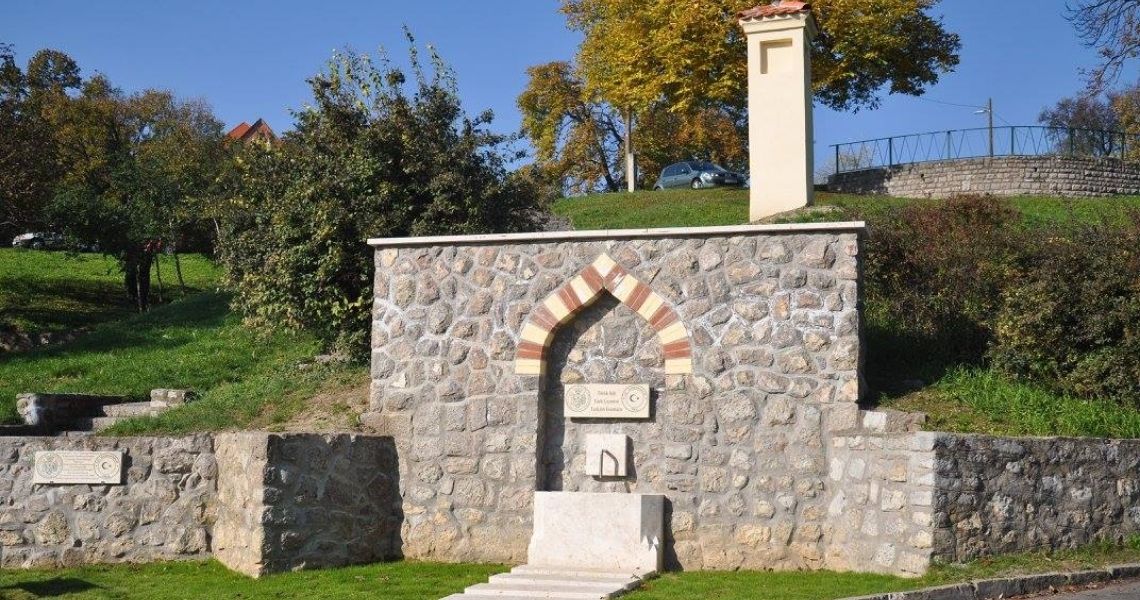At the bottom of Mount Rókus, near the stairs under the Children’s Hospital, the spring once flowed. The original spring was captured in 1935, but it was an important spring in Turkish times much earlier. In 1965, during construction, the natural underground vein feeding the spring was cut. Since then, its waters have been channelled into a canal. This well of Turkish origin used to be a place for a ritual ablution (Kerlejela). Today, however, all that is visible is the limestone masonry with the iron spout, which is completely surrounded by the calcareous tuff. In the ditch next to it, during rainy seasons, there is a faint presence of water. Water used to trickle from the upper walkway, because there was a spring further up. Opposite the spring there were once low little garden houses, the street was called Kisgyűd Street. There is a lookout above the spring, with a shrine, but the pictures are missing. There is said to have been a plague burial ground around the tomb of Idris Baba . In the three niches on two sides were probably St. Roch and St. Rozalia, and in the middle the Virgin Mary in the Sun (Immaculata). It was renovated in 2014 with Turkish assistance.

